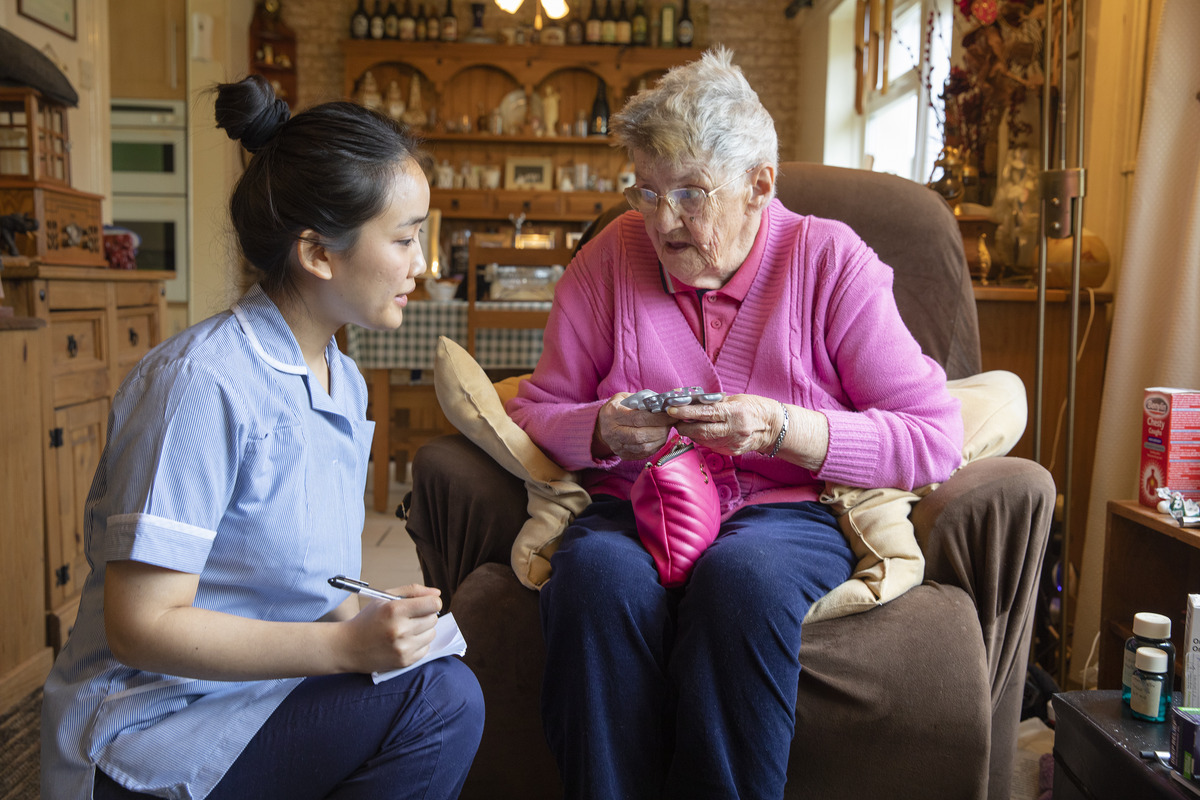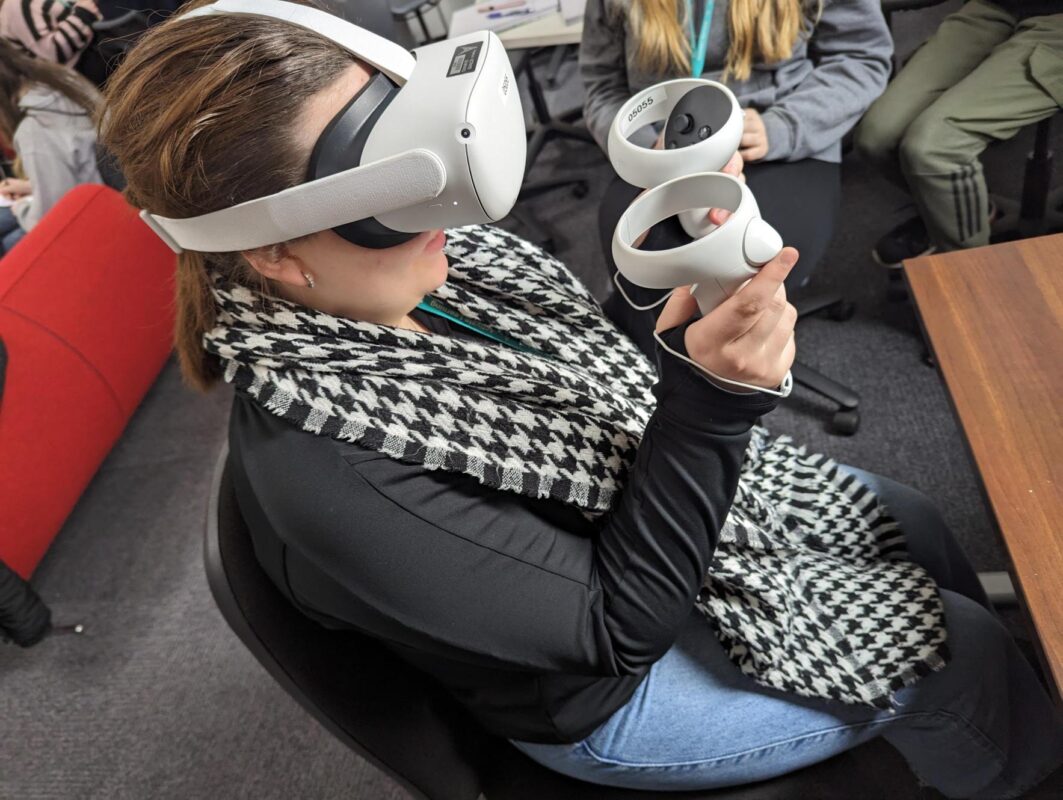The implications of the COVID-19 pandemic for vocational education and training: Lessons learnt from OECD countries

The COVID-19 pandemic has disrupted education, like most aspects of our lives. Vocational education and training (VET) systems faced particular challenges, linked to the difficulty of organising practice-oriented learning remotely and the limited availability of work based learning opportunities.
The OECD report “The implications of the COVID-19 pandemic for vocational education and training” (June 2021) describes the impact of the pandemic on VET systems in OECD countries and the measures taken to ensure continuity of education and training in the VET sector. This article summarises some of the key findings from the report.
VET institutions were closed for extended periods in some OECD countries
All OECD countries resorted to closures of education institutions at different points during the pandemic. This was the case for education institutions at all education levels, including institutions providing upper-secondary VET. The Netherlands is a noteworthy exception, where VET was never fully closed, while general upper-secondary education was closed for just over 40 days in 2020. In other countries, the duration of full closures of VET institutions in 2020 ranges from around 20 days in Denmark, Germany and New Zealand and around 30 days in France, Luxembourg and Norway, to just over 100 days in Turkey and Poland and more than 150 days in Colombia, Costa Rica and Mexico.
In two thirds of countries, the number of days of closures in 2020 is the same for vocational and general upper-secondary education. However, in the remaining countries, VET had fewer days of full closure than general upper-secondary education, although differences are small in many cases. The largest differences can be observed in Hungary and the Slovak Republic, where VET institutions were closed for 25 and 23 days less, respectively, than general upper-secondary education. Several countries indeed allowed for a partial re-opening for certain VET students or specific elements of VET curricula.
Fewer work-based learning opportunities were provided
Work-based learning is an important part of many VET programmes in OECD countries. The COVID-19 crisis is making it difficult for VET students to complete work-based learning activities. As previous economic recessions have shown, a reduction in economic activity not only affects regular jobs but also apprenticeship places and other forms of work-based learning opportunities. The current crisis might even bring about a larger reduction in the offer of work-based learning opportunities given the uncertainty regarding possible subsequent waves of the pandemic and ensuing lockdowns, but also in light of the difficulty of organising training in workplaces that are faced with strict health and safety regulations.
Recent data indeed show significant declines in apprenticeship places in various countries. In Australia, for example, apprenticeship and traineeship commencements were 18.8% lower in the twelve months ending 30 September 2020 than in the year before, and the fall was larger in the non-trade than in trade occupations. In Germany, the number of apprenticeship contracts concluded dropped by 9.4% in 2020 compared to the previous year. In England, apprenticeship starts in the first two quarters of the 2020/21 academic year were 18% lower than in the same period the year before.
Nonetheless, not all countries experienced a drop in work-based learning opportunities. This was the case in Switzerland, for example, where participation remained stable, and the apprenticeship market is generally less affected by cyclical fluctuations than in many other countries. In France, the number of apprenticeship contracts concluded in 2020 was markedly higher than in 2019, partially reflecting new incentives introduced during the pandemic.
Countries adopted a wide range of measures to avoid learning losses and ensure that learners could obtain their qualification
Distance learning was widely used, but had its limitations in VET
Remote teaching and learning provided some continuity in education systems around the world, but digital learning environments tend to be much better suited for academic learning than for practice-oriented learning. So while digital solutions could substitute for the more theoretical components of vocational curricula, they were much less suited for the more practice-oriented components of vocational education, which tend to be the main value and asset of VET. This is one of the main reasons for countries to prioritise a (partial) re-opening of VET before general education.
Nonetheless, all OECD countries made use of online platforms in upper-secondary VET in 2020 and/or 2021, and between 70% and 80% of countries used take-home packages, television and mobile phones for teaching and learning during the pandemic. To support teachers in moving to a remote learning environment, many countries have put in place specific measures to support skills development, including new training programmes or financial support for training. Almost all OECD countries with available information supported VET teachers in developing their skills for remote or hybrid teaching. In over two thirds of countries, this was done by i) providing new self-learning tools; ii) building or expanding teacher networks; and iii) providing new training programmes. Moreover, almost 60% of countries provided additional funding to scale up existing training programmes.
Employers were encourage to provide work-based learning and safety net options were introduced
To encourage and support employers in providing work-based learning opportunities, almost a quarter of OECD countries introduced new financial incentives for employers and an additional 20% of countries scaled up existing incentives. In some countries these new or scaled up incentives have been specifically targeted towards small and medium-sized enterprises (SMEs). Even under normal circumstances, SMEs face more barriers to the provision of work-based learning than larger firms do, and the crisis has only exacerbated these differences. In Germany, for example, the new federal programme “Secure apprenticeships” provides subsidies to motivate SMEs that were particularly affected by the COVID-19 crisis to maintain or even increase their level of training, to avoid short-time working for trainees and to enable trainees from COVID-related insolvent companies to continue their training.
To ensure that students continued to have access to opportunities to develop their professional skills in the absence of sufficient work-based learning opportunities, some countries provided school-based alternatives. In various countries, school-based safety net programs already existed and these were scaled up. This was the case, for example, in Austria, where since 2008 VET students who cannot be placed in a company-run apprenticeship have the guarantee that they will be enrolled in equivalent apprenticeship programmes in a supra-company training entity. The number of places in such programmes was increased during the COVID-19 crisis. Other countries introduced new (temporary) safety net programmes during the crisis. While such alternatives can be important tools to ensure the continuity of professional skills development, they are unlikely to deliver the same benefits as learning in a real workplace.
Changes to curricula and the organisation of the academic year were introduced
Because of the often extended periods of closures of VET institutions and the limited availability of work-based learning opportunities, various countries introduced changes to the organisation of the academic year and/or their curricula. In around 60% of countries such changes were introduced in the year 2019/2020, and this rose to over 70% in 2020/2021. Only Brazil and Portugal extended the academic year, and they did so in both years. Prioritisation of certain areas of the curriculum was applied in eight countries in 2019/2020 and that strategy was maintained in the next year in six of them.
Various strategies were adopted to bringing in more flexibility in work-based learning requirements and provision:
- Various countries temporarily introduced more flexibility in the organisation of work-based learning in VET programmes. In Flanders (Belgium), for example, students in the dual learning system were allowed a longer time than the usual 20 days to find a possible employer where learning can occur safely in the workplace.
- Some countries also introduced temporary adjustments to the duration of the work-based learning component or the full VET programme. This was the case, for example, in France, where the number of weeks of training in a professional environment was reduced to take into account the health context and the first lockdown.
- Another form of flexibility has been the use of online learning or remote apprenticeships. In Chile, for example, amendments were made to the relevant decrees to recognise the hours performed in hybrid mode as work-based learning hours and to authorise remote supervision.
VET assessments or examinations were adjusted
Assessments in VET often involve skills demonstrations, which might have been particularly difficult to organise during the pandemic, also after education institutions re-opened under strict health and safety regulations. Therefore, some countries have made changes in the way they organised their VET exams. Moreover, as not all VET students had access to work-based learning and other forms of practice-oriented learning, certain countries changed graduation criteria to take this into account. Two thirds of OECD countries with available information made adjustments to graduation criteria in VET at the end of academic year 2019/2020, and almost 60% of countries for the academic year 2020/2021. This is the same as for general upper-secondary education. In all countries that have national examinations for VET, changes were made to these examinations due to the pandemic in academic year 2019/2020. In almost 90% of countries, additional health and safety measures were introduced for these national VET examinations. In three quarters of countries, national VET examinations were postponed or rescheduled. In just over 40% of countries, alternative forms of assessment were introduced. These changes were more common in VET than in general upper-secondary education, reflecting the challenges in organising practice-oriented assessments in times of closures of education institutions and strict health and safety regulations.
The way forward
The COVID-19 crisis posed important challenges for VET systems around the world, and governments and other VET stakeholders needed to be creative to ensure the continuity of teaching and learning. This has highlighted the need for flexibility in VET, but also for innovation –including in terms of remote teaching and learning tools and materials.
At the same time, this crisis underlined the importance of the VET sector. OECD’s international comparisons consistently show that high-quality VET is the cornerstone of effective youth transitions into the labour market and, if anything, the pandemic has revealed how much the jobs for which vocational education and training prepare are the backbone of our economies. VET can play a key role in the recovery from the COVID-19 crisis, by equipping students with the skills the labour market needs and providing adults with relevant up-skilling and re-skilling opportunities. Responsive and flexible VET systems are crucial to make sure that the offer and content of programmes is relevant and accessible.
Marieke Vandeweyer, Policy Analyst at OECD












Responses